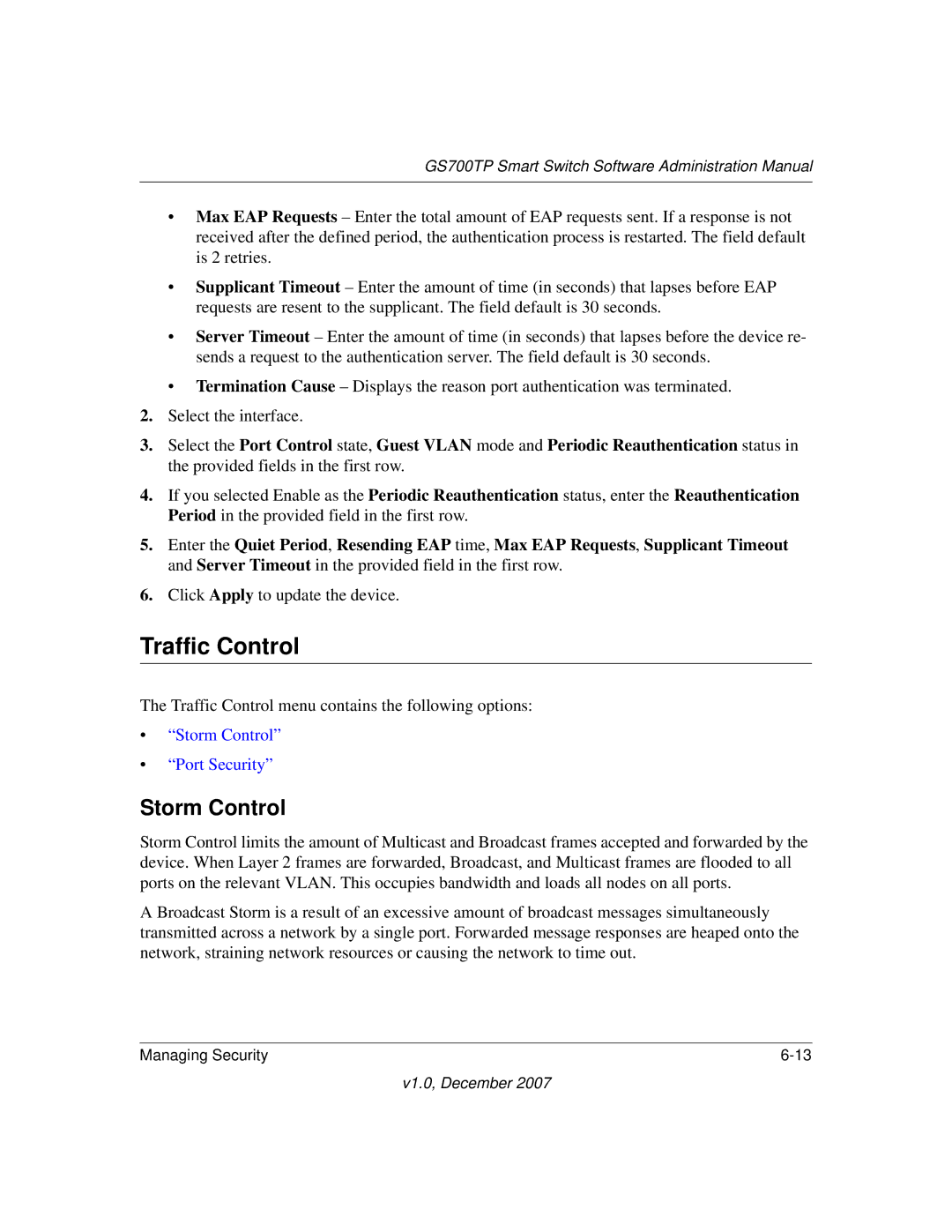
GS700TP Smart Switch Software Administration Manual
•Max EAP Requests – Enter the total amount of EAP requests sent. If a response is not received after the defined period, the authentication process is restarted. The field default is 2 retries.
•Supplicant Timeout – Enter the amount of time (in seconds) that lapses before EAP requests are resent to the supplicant. The field default is 30 seconds.
•Server Timeout – Enter the amount of time (in seconds) that lapses before the device re- sends a request to the authentication server. The field default is 30 seconds.
•Termination Cause – Displays the reason port authentication was terminated.
2.Select the interface.
3.Select the Port Control state, Guest VLAN mode and Periodic Reauthentication status in the provided fields in the first row.
4.If you selected Enable as the Periodic Reauthentication status, enter the Reauthentication Period in the provided field in the first row.
5.Enter the Quiet Period, Resending EAP time, Max EAP Requests, Supplicant Timeout and Server Timeout in the provided field in the first row.
6.Click Apply to update the device.
Traffic Control
The Traffic Control menu contains the following options:
•“Storm Control”
•“Port Security”
Storm Control
Storm Control limits the amount of Multicast and Broadcast frames accepted and forwarded by the device. When Layer 2 frames are forwarded, Broadcast, and Multicast frames are flooded to all ports on the relevant VLAN. This occupies bandwidth and loads all nodes on all ports.
A Broadcast Storm is a result of an excessive amount of broadcast messages simultaneously transmitted across a network by a single port. Forwarded message responses are heaped onto the network, straining network resources or causing the network to time out.
Managing Security |
v1.0, December 2007
